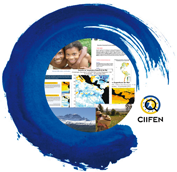Evaluation of the current state of small pelagic fisheries in the Colombian Pacific: ensuring the sustainability of the resource and evaluating its response to climatic events
Abstract. Commercial fishing of small pelagic species in Colombia, mainly "carduma" (Cetengraulis mysticetus) and "plumuda" (Opisthonema spp.), has been recorded since 1970. Both are used to produce fish meal for aquaculture and poultry and for canned foods. These two species are filter feeders, and therefore support higher levels of the food chain (other fish, birds and marine mammals), and artisanal fishermen use them as bait. Between 2005 and 2010, 86.131 t have been captured (X = 14.355 t yr−1), and a strong reduction was noticed in 2009 (6.969 t). Carduma is considered a total spawning species. However, from 1997 to 2000 and from 2008 to date, atypical reproductive behavior of the species has been observed, including partition of the spawning period and the reduction of the volume of eggs and larvae released to the environment. Both situations are linked to thermal anomalies such as El Niño and La Niña events. Therefore, the process of assigning the global quota of extraction has been revised to take into account the reduction of total capture during the last years and the inconsistencies of the reproductive processes. The Ministry of Agriculture reduced the quota by 10%, leaving available a total of 27 000 t for 2010 and reduced it again to 25 000 t for 2011. It is important to maintain the management measures that are already implemented on this resource (bans during reproduction seasons, catch quotas, regulation of mesh sizes for the fishing nets, and limiting the number of new vessels) and considering other measures such as season closure for recruitment and establishment of marine protected areas to further contribute to the sustainability of these fisheries.






